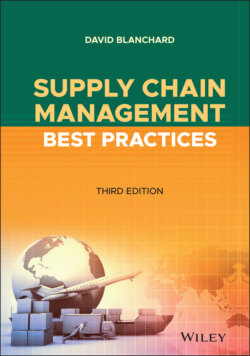Читать книгу Supply Chain Management Best Practices - David Blanchard - Страница 37
SCM for Dummies
ОглавлениеSCOR is a multilevel process reference model, moving from Level 1 (operations strategy) to Level 4 (phased implementation). The SCOR model combines business process reengineering with benchmarking, best practices, and process measurement into an all-encompassing framework for executing a supply chain project. According to consultant Peter Bolstorff, executive vice president of the Association for Supply Chain Management and one of the original developers of the SCOR model, SCOR is most successful when solid project management is combined with technology expertise for implementation in a series of six steps:
1 Educate for support. Find a project champion (Bolstorff describes this person as an “evangelist”) within your company who has the passion to lead a supply chain project. At the same time, identify a key executive to actively sponsor the project. Both of these people must be willing to learn SCOR from top to bottom and be enthusiastic about sharing their knowledge throughout the organization.
2 Discover the opportunity. Form a business case that justifies investment in a supply chain project. A key outcome from this step is a project charter, Bolstorff notes, which sets up the supply chain project in terms of approach, budget, organization, communication plan, and establishing clear measures for success.
3 Analyze. In this step, you articulate the value proposition of the project in terms of cash-to-cash cycle time, inventory days, order fulfillment, and other performance factors. The intent here is to define the supply chain opportunity according to the company's profit-and-loss statement.
4 Design. The two key components in this step are material flow and work/information flow. According to Bolstorff, some of the questions you'll want to ask are: “What are my material flow problems and what's it worth to solve them?” and “How does work and information flow impact material flow?” Define the work first, and then the information that moves the material.
5 Develop. The design team shifts to become an implementation team assigned to specific tasks. The goal, as Bolstorff explains it, is to create a master schedule for the projects that will take your supply chain from its present state (“as is”) to its optimal state (“to be”).
6 Implement. Based on the master schedule for each change, prepare and transition your company for the changes as you begin implementation of the supply chain transformation.18
